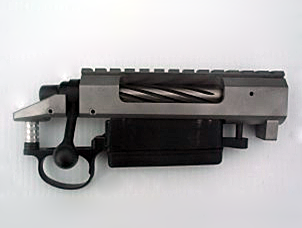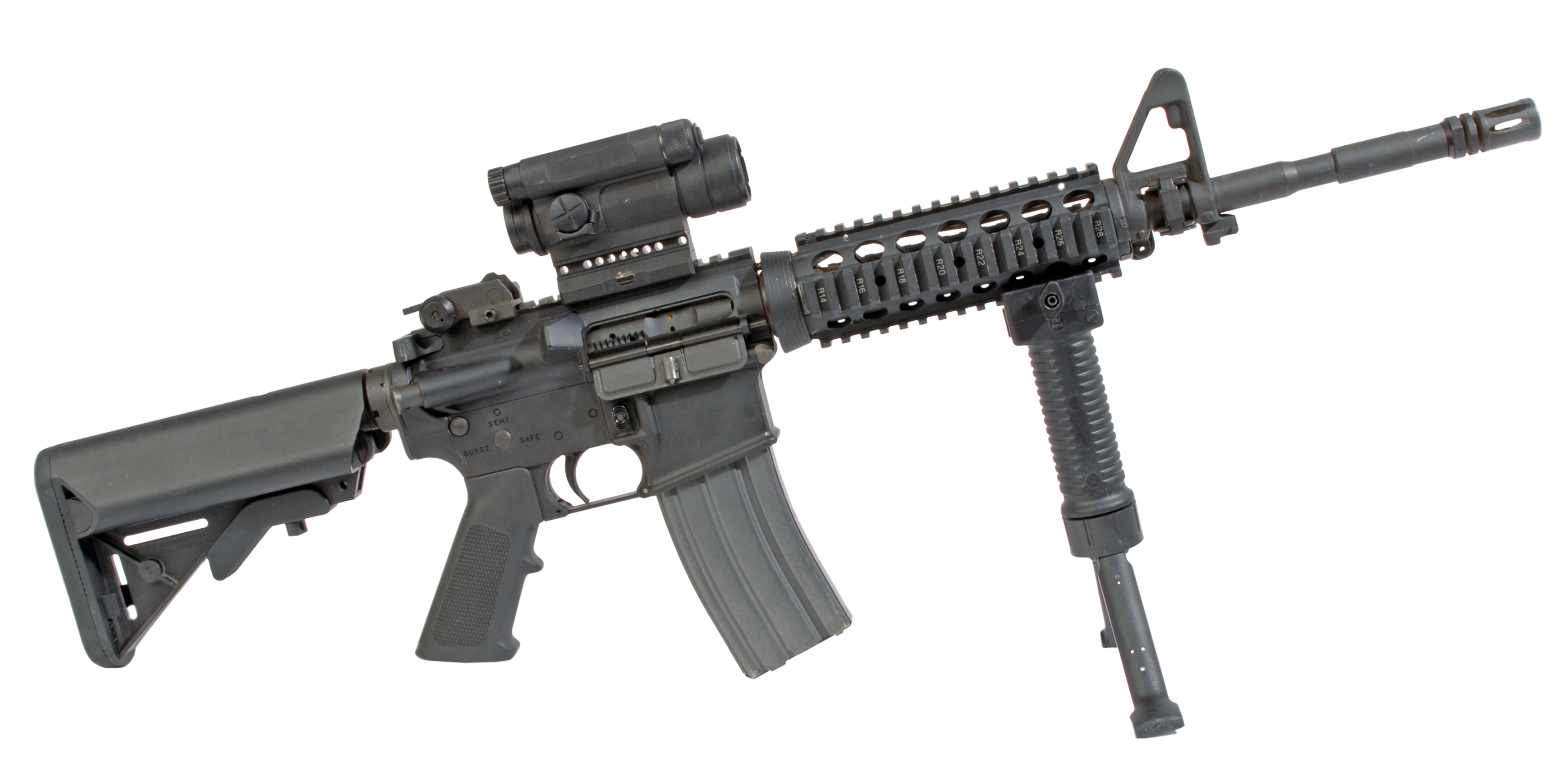|
C14 Timberwolf
The C14 Timberwolf MRSWS (Medium Range Sniper Weapon System) is a bolt-action sniper rifle built by the Canadian arms company PGW Defence Technologies Inc. In 2005 they won the contract to supply the Canadian Forces Land Command with the C14 Timberwolf MRSWS for $4.5 million.Canadian Forces Award Canadian Sniper Rifle Contract Canadian Forces News release NR–05.040 - May 26, 2005 (Accessed Feb. 5, 2009) The version of the rifle, which is being used to replace the C3A1 sniper rifle, started as a civilian precision sport rifle. T ... [...More Info...] [...Related Items...] OR: [Wikipedia] [Google] [Baidu] |
Sniper Rifle
A sniper rifle is a high-precision, long-range rifle. Requirements include accuracy, reliability, mobility, concealment and optics for anti-personnel, anti-materiel and surveillance uses of the military sniper. The modern sniper rifle is a portable shoulder-fired weapon system with a choice between bolt-action or semi-automatic action, fitted with a telescopic sight for extreme accuracy and chambered for a high-ballistic performance centerfire cartridge. History The Whitworth rifle was arguably the first long-range sniper rifle in the world. Designed by Sir Joseph Whitworth, a prominent British engineer, it used barrels with hexagonal polygonal rifling, which meant that the projectile did not have to bite into the rifling grooves as was done with conventional rifling. His rifle was far more accurate than the Pattern 1853 Enfield, which had shown some weaknesses during the recent Crimean War. At trials in 1857, which tested the accuracy and range of both weapons, Whitworth' ... [...More Info...] [...Related Items...] OR: [Wikipedia] [Google] [Baidu] |
CFB Gagetown
5th Canadian Division Support Base (5 CDSB) Gagetown, formerly known as and commonly referred to as CFB Gagetown, is a large Canadian Forces Base covering an area over , located in southwestern New Brunswick. Construction of the base At the beginning of the Cold War, Canadian defence planners recognized the need for providing the Canadian Army with a suitable training facility where brigade and division-sized armoured, infantry, and artillery units could exercise in preparation for their role in defending western Europe under Canada's obligations to the North Atlantic Treaty. The facility would need to be located relatively close to an all-season Atlantic port and have suitable railway connections. Existing training facilities dating from the First and Second World Wars in eastern Canada were relatively small ( Camp Debert, Camp Aldershot, Sussex Military Camp, Camp Valcartier, Camp Petawawa, Camp Utopia), thus a new facility was considered. At the same time, regional econo ... [...More Info...] [...Related Items...] OR: [Wikipedia] [Google] [Baidu] |
Leupold
Leupold & Stevens, Inc. is an American manufacturer of telescopic sights, red dot sights, binoculars, rangefinders, spotting scopes, and eyewear located in Beaverton, Oregon, United States. The company, started in 1907, is on its fifth generation of family ownership.Leeson, Fred (November 17, 1996). "All in the family". ''The Oregonian''. History Leupold & Stevens was founded by the German immigrant Markus Friedrich (Fred) Leupold and his brother-in-law Adam Voelpel in 1907, under the name Leupold & Voelpel. At the time, the company specialized in the repair of survey equipment. In 1911, Leupold & Voelpel was contracted by John Cyprian (J.C.) Stevens to manufacture a water level recorder he had designed and patented. After the initial success of the product, he was made partner in 1914 and the company was renamed Leupold, Voelpel, and Co.Stevens, John Cyprian. ''The Autobiography of a Civil Engineer'', published 1959. Besides the first water level recorder, the company invente ... [...More Info...] [...Related Items...] OR: [Wikipedia] [Google] [Baidu] |
Picatinny Rail
The Picatinny rail ( or ), or Pic rail for short, also known as a MIL-STD-1913 rail, 1913 rail or STANAG 2324 rail (cancelled), is a military standard rail interface system that provides a mounting platform for firearm accessories. It was originally used for mounting of scopes atop the receivers of larger caliber rifles. Once established, its use expanded to also attaching other accessories, such as: iron sights, tactical lights, laser aiming modules, night vision devices, reflex sights, holographic sights, foregrips, bipods, slings and bayonets. An updated version of the rail is adopted as a NATO standard as the STANAG 4694 NATO Accessory Rail. Significance Because of their many uses, Picatinny rails and accessories have replaced iron sights in the design of many firearms and available as aftermarket add-on parts for most actions that do not have them integrated, and they are also on the undersides of semi-automatic pistol frames and grips. When adding a Picat ... [...More Info...] [...Related Items...] OR: [Wikipedia] [Google] [Baidu] |
Iron Sights
Iron sights are a system of physical alignment markers (usually made of metallic material) used as a sighting device to assist the accurate aiming of ranged weapons (such as a firearm, airgun, crossbow or even compound bow), or less commonly as a primitive finder sight for optical telescopes. The earliest sighting device, it relies completely on the viewer's naked eye (mostly under ambient lighting), and is distinctly different to optical sights such as telescopic sights, reflector (reflex) sights, holographic sights and laser sights, which make use of optical manipulation and/or active illumination, as well as the newer optoelectronics, which use digital imaging and even incorporate augmented reality. Iron sights are typically composed of two components mounted perpendicularly above the weapon's bore axis: a rear sight nearer (or ''proximally'') to the shooter's eye, and a front sight farther forward (or ''distally'') near the muzzle. During aiming, the shooter aligns h ... [...More Info...] [...Related Items...] OR: [Wikipedia] [Google] [Baidu] |
Trigger Guard
A trigger guard is a protective loop surrounding the trigger of a firearm designed to prevent unwanted contact with the trigger, which may cause an accidental discharge. Other devices that use a trigger-like actuator mechanism, such as inhalers, crossbows and power tools, may also have trigger guards. On rifles with a bottom metal, the trigger guard is often incorporated as part of the bottom metal. Winter trigger guards Some firearms may have their trigger guard removed or repositioned as not to impair use with large cold weather gloves on, especially those intended to be used in arctic conditions. Quite notably, the Accuracy International Arctic Warfare The Accuracy International Arctic Warfare rifle is a bolt-action sniper rifle designed and manufactured by the British company Accuracy International. It has proved popular as a civilian, police, and military rifle since its introduction in th ... line of rifles have enlarged trigger guards for use in cold climates, prim ... [...More Info...] [...Related Items...] OR: [Wikipedia] [Google] [Baidu] |
Muzzle Brake
A muzzle brake or recoil compensator is a device connected to, or a feature integral to the construction of, the muzzle or barrel of a firearm or cannon that is intended to redirect a portion of propellant gases to counter recoil and unwanted muzzle rise. Barrels with an integral muzzle brake are often said to be ported. The concept of a muzzle brake was first introduced for artillery. It was a common feature on many anti-tank guns, especially those mounted on tanks, in order to reduce the area needed to take up the strokes of recoil and kickback. They have been used in various forms for rifles and pistols to help control recoil and the rising of the barrel that normally occurs after firing. They are used on pistols for practical pistol competitions, and are usually called compensators in this context.STI article on Limcat Under ... [...More Info...] [...Related Items...] OR: [Wikipedia] [Google] [Baidu] |
Fluting (firearms)
In firearms terminology, fluting refers to the removal of material from a cylindrical surface, usually creating grooves. This is most often the barrel of a rifle, though it may also refer to the cylinder of a revolver or the bolt of a bolt action rifle. In contrast to rifle barrels and revolver cylinders, rifle bolts are normally helically fluted, though helical fluting is sometimes also applied to rifle barrels. The main purpose of fluting is to reduce weight, and to a lesser extent increase rigidity for a given total weight or increase surface area to make the barrels less susceptible for overheating for a given total weight. However, for a given diameter, while a fluted barrel may cool more quickly, a non-fluted barrel will be stiffer and be able to absorb a larger amount of total heat at the price of additional total weight. In barrel chamber In the barrel chamber, fluting refers to gas relief flutes/grooves used to ease the extraction of cartridges. They may also ... [...More Info...] [...Related Items...] OR: [Wikipedia] [Google] [Baidu] |
Gun Barrel
A gun barrel is a crucial part of gun-type weapons such as small firearms, artillery pieces, and air guns. It is the straight shooting tube, usually made of rigid high-strength metal, through which a contained rapid expansion of high-pressure gas(es) is used to propel a projectile out of the front end ( muzzle) at a high velocity. The hollow interior of the barrel is called the bore, and the diameter of the bore is called its caliber, usually measured in inches or millimetres. The first firearms were made at a time when metallurgy was not advanced enough to cast tubes capable of withstanding the explosive forces of early cannons, so the pipe (often built from staves of metal) needed to be braced periodically along its length for structural reinforcement, producing an appearance somewhat reminiscent of storage barrels being stacked together, hence the English name.''A History of Warfare'' - Keegan, John, Vintage 1993. History Gun barrels are usually metal. However, the e ... [...More Info...] [...Related Items...] OR: [Wikipedia] [Google] [Baidu] |
Titanium
Titanium is a chemical element with the symbol Ti and atomic number 22. Found in nature only as an oxide, it can be reduced to produce a lustrous transition metal with a silver color, low density, and high strength, resistant to corrosion in sea water, aqua regia, and chlorine. Titanium was discovered in Cornwall, Great Britain, by William Gregor in 1791 and was named by Martin Heinrich Klaproth after the Titans of Greek mythology. The element occurs within a number of minerals, principally rutile and ilmenite, which are widely distributed in the Earth's crust and lithosphere; it is found in almost all living things, as well as bodies of water, rocks, and soils. The metal is extracted from its principal mineral ores by the Kroll and Hunter processes. The most common compound, titanium dioxide, is a popular photocatalyst and is used in the manufacture of white pigments. Other compounds include titanium tetrachloride (TiCl4), a component of smoke screens and catalysts; and ... [...More Info...] [...Related Items...] OR: [Wikipedia] [Google] [Baidu] |
Firearm Action
In firearms terminology, an action is the functional mechanism of a breech-loading firearm that handles (loads, locks, fires, extracts and ejects) the ammunition cartridges, or the method by which that mechanism works. Actions are technically not present on muzzleloaders, as all those are single-shot firearms with a closed off breech with the powder and projectile manually loaded from the muzzle. Instead, the muzzleloader ignition mechanism is referred to as the ''lock'' (e.g. matchlock, flintlock, caplock). Actions can be categorized in several ways, including single action versus double action, break action versus bolt action, and others. The term action can also include short, long, and magnum if it is in reference to the length of the rifle's receiver and the length of the bolt. The short action rifle usually can accommodate a cartridge length of or smaller. The long action rifle can accommodate a cartridge of , and the magnum action rifle can accommodate cartridges ... [...More Info...] [...Related Items...] OR: [Wikipedia] [Google] [Baidu] |








